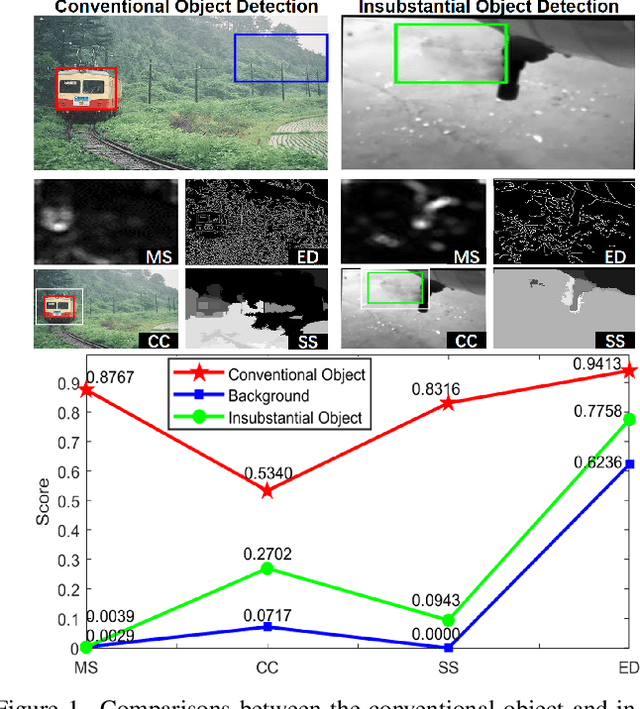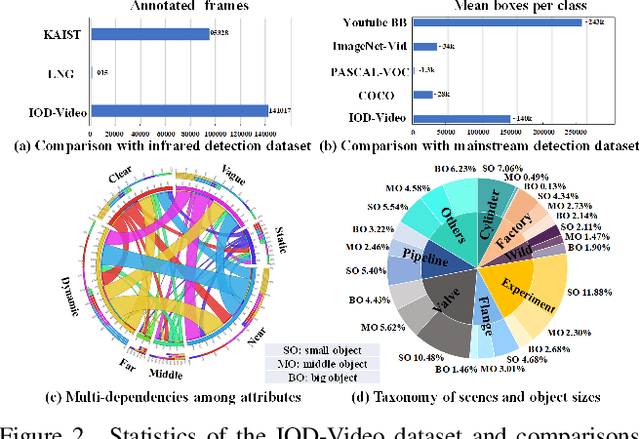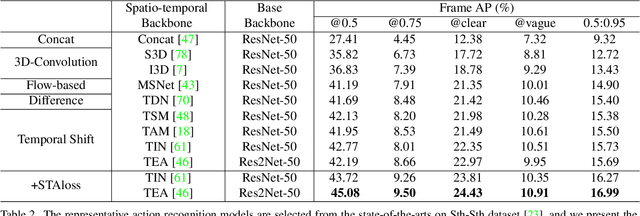Tao Lv
Gaseous Object Detection
Feb 18, 2025Abstract:Object detection, a fundamental and challenging problem in computer vision, has experienced rapid development due to the effectiveness of deep learning. The current objects to be detected are mostly rigid solid substances with apparent and distinct visual characteristics. In this paper, we endeavor on a scarcely explored task named Gaseous Object Detection (GOD), which is undertaken to explore whether the object detection techniques can be extended from solid substances to gaseous substances. Nevertheless, the gas exhibits significantly different visual characteristics: 1) saliency deficiency, 2) arbitrary and ever-changing shapes, 3) lack of distinct boundaries. To facilitate the study on this challenging task, we construct a GOD-Video dataset comprising 600 videos (141,017 frames) that cover various attributes with multiple types of gases. A comprehensive benchmark is established based on this dataset, allowing for a rigorous evaluation of frame-level and video-level detectors. Deduced from the Gaussian dispersion model, the physics-inspired Voxel Shift Field (VSF) is designed to model geometric irregularities and ever-changing shapes in potential 3D space. By integrating VSF into Faster RCNN, the VSF RCNN serves as a simple but strong baseline for gaseous object detection. Our work aims to attract further research into this valuable albeit challenging area.
Aperture Diffraction for Compact Snapshot Spectral Imaging
Sep 27, 2023



Abstract:We demonstrate a compact, cost-effective snapshot spectral imaging system named Aperture Diffraction Imaging Spectrometer (ADIS), which consists only of an imaging lens with an ultra-thin orthogonal aperture mask and a mosaic filter sensor, requiring no additional physical footprint compared to common RGB cameras. Then we introduce a new optical design that each point in the object space is multiplexed to discrete encoding locations on the mosaic filter sensor by diffraction-based spatial-spectral projection engineering generated from the orthogonal mask. The orthogonal projection is uniformly accepted to obtain a weakly calibration-dependent data form to enhance modulation robustness. Meanwhile, the Cascade Shift-Shuffle Spectral Transformer (CSST) with strong perception of the diffraction degeneration is designed to solve a sparsity-constrained inverse problem, realizing the volume reconstruction from 2D measurements with Large amount of aliasing. Our system is evaluated by elaborating the imaging optical theory and reconstruction algorithm with demonstrating the experimental imaging under a single exposure. Ultimately, we achieve the sub-super-pixel spatial resolution and high spectral resolution imaging. The code will be available at: https://github.com/Krito-ex/CSST.
Explore Spatio-temporal Aggregation for Insubstantial Object Detection: Benchmark Dataset and Baseline
Jun 23, 2022



Abstract:We endeavor on a rarely explored task named Insubstantial Object Detection (IOD), which aims to localize the object with following characteristics: (1) amorphous shape with indistinct boundary; (2) similarity to surroundings; (3) absence in color. Accordingly, it is far more challenging to distinguish insubstantial objects in a single static frame and the collaborative representation of spatial and temporal information is crucial. Thus, we construct an IOD-Video dataset comprised of 600 videos (141,017 frames) covering various distances, sizes, visibility, and scenes captured by different spectral ranges. In addition, we develop a spatio-temporal aggregation framework for IOD, in which different backbones are deployed and a spatio-temporal aggregation loss (STAloss) is elaborately designed to leverage the consistency along the time axis. Experiments conducted on IOD-Video dataset demonstrate that spatio-temporal aggregation can significantly improve the performance of IOD. We hope our work will attract further researches into this valuable yet challenging task. The code will be available at: \url{https://github.com/CalayZhou/IOD-Video}.
 Add to Chrome
Add to Chrome Add to Firefox
Add to Firefox Add to Edge
Add to Edge